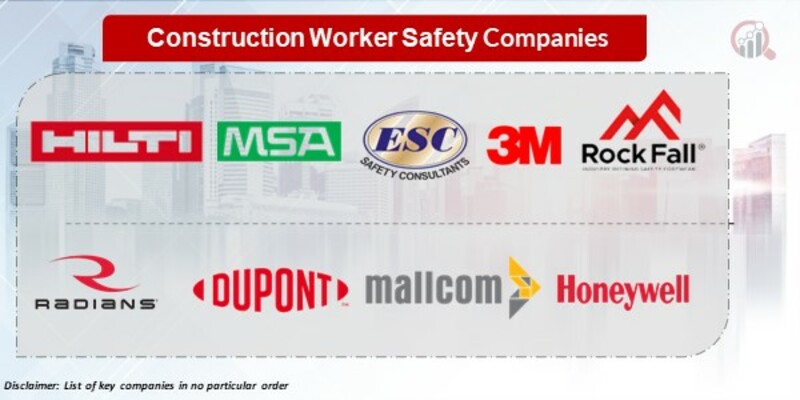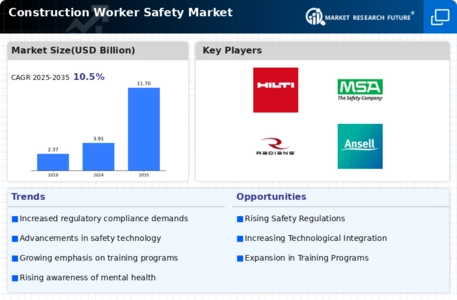Top Industry Leaders in the Construction Worker Safety Market

The construction industry pulsates with activity, shaping skylines and infrastructures, but it also grapples with an ever-present challenge: worker safety. Fortunately, a thriving construction worker safety market exists, a bustling canvas where diverse players employ innovative strategies to safeguard the well-being of those building our world. Let's delve into this dynamic landscape, exploring key strategies, market influencers, industry news, and recent developments shaping the future of construction worker safety.
Strategies Building a Safer Future:
-
Product Innovation: Leading players like MSA Safety, 3M, and Honeywell are continuously developing cutting-edge solutions – fall protection systems with enhanced shock absorption, breathable and ergonomically designed personal protective equipment (PPE), and smart wearables that monitor vital signs and detect hazards. -
Technology Integration: Artificial intelligence (AI) and IoT are revolutionizing safety. Systems analyzing real-time data on worker location, equipment usage, and environmental conditions can prevent accidents before they occur. For example, smart helmets with collision detection and fatigue alert systems are gaining traction. -
Training and Compliance: Companies like Hilti and ESC Safety Consultants offer comprehensive safety training programs, empowering workers with knowledge and best practices. This includes virtual reality simulations for hazard awareness and hands-on training on equipment operation. -
Data-Driven Insights and Analytics: Safety solutions are becoming data-driven. By analyzing past incident data and identifying risk patterns, companies can develop targeted interventions and improve overall safety strategy. Wearable tech with data collection capabilities is facilitating this shift. -
Collaboration and Partnerships: Industry stakeholders, including manufacturers, contractors, government agencies, and worker unions, are increasingly collaborating to share knowledge, develop best practices, and advocate for stricter safety regulations.
Factors Influencing Market Share:
-
Product Performance and Innovation: Superior safety features, user comfort, and cost-effectiveness of safety equipment will hold an edge. Companies constantly innovating to address diverse needs and challenges stand out. -
Compliance with Regulations: Stringent workplace safety regulations in regions like Europe and North America drive demand for certified PPE and safety systems. Players ensuring compliance gain market access and trust. -
Focus on Worker Wellness: Beyond physical safety, mental health and well-being are being recognized. Solutions like stress management programs and ergonomic designs for equipment are gaining traction, influencing brand reputation. -
Training Effectiveness and Accessibility: Comprehensive and engaging training programs that cater to diverse levels of experience and languages are crucial. Companies offering flexible and accessible training options have an advantage. -
Data-Driven Strategies and Risk Management: Demonstrating the ability to mitigate risks through data analysis and proactive solutions attracts safety-conscious companies and contractors.
Key Players:
-
Hilti
-
MSA
-
ESC Safety Consultants
-
3M Company
-
Rock Fall Ltd.
-
Radians, inc.
-
DuPont
-
Mallcom Limited
-
Honeywell International Inc.
-
Ansell Ltd
Recent Developments:
September 2023: The American Society of Safety Professionals (ASSP) launches a new campaign to promote safety culture in construction.October 2023: The International Organization for Standardization (ISO) publishes a new standard for fall protection systems.November 2023: A consortium of leading construction companies announces a joint investment in developing AI-powered safety solutions.December 2023: A major insurance company launches a new program offering discounts to construction companies with strong safety records.









